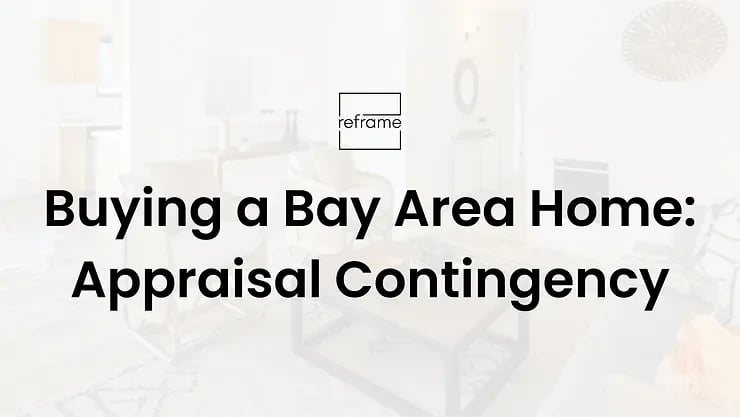What is an appraisal?
An appraisal is an evaluation completed by an appraiser hired by the buyer’s lender. The appraiser will go the the property and evaluate the value of the home. The goal of the appraisal is to determine the value of the property as part of the loan process.
What happens when you get the results of an appraisal back?
-
If the value comes in above the purchase price, no action is required — and I usually recommend not bringing it up to the listing agent/seller, especially if you are requesting repairs
-
If the value comes in at the purchase price, no action is required.
-
If the value comes in below the purchase price, now is the time for action. a. Your agent can submit for a rebuttal. They find comparables in the neighborhood to show that the home should be valued higher. b. If you have an appraisal contingency in place, your agent can re-negotiate the purchase price. c. If the seller is unwilling to budge on the price, or if you do not have an appraisal contingency, the last option is to cover the appraisal gap.
Covering the Appraisal Gap
Scenario 1 — Appraisal comes in below value: If you offer $1,010,000 on a home where you will put 20% down and the appraisal comes in at $1,000,000. Your loan amount is 80% of the the appraised value at $1,000,000: $800,000. Your downpayment is $210,000 ($200,000 +$10,000 gap).
Scenario 2 — Appraisal comes in at value: If you offer $1,010,000 on a home where you will put 20% down and the appraisal comes in at $1,010,000. Your loan amount is 80% of the purchase $808,000. Your downpayment is $202,000.
Often buyers will offer to cover a specific amount when they send in their offer. They keep the appraisal contingency, but agree to cover a maximum amount ahead of time. Here’s the verbiage used in the offer:
Removing the Appraisal Contingency
Removing the Appraisal contingency tells the seller that you are not going to renegotiate the purchase price if the appraisal comes in below the purchase price. It’s implied that you will not cancel escrow due to a low appraisal.
What happens if the appraisal comes in wildly low
While you’re not supposed to cancel a contract due to a low appraisal when you do not have an appraisal contingency in place, I have seen and heard from other agents that buyers will use the loan contingency or an investigation contingency to pull out of escrow safely and still get your earnest money deposit back.
Ways to increase your chances of getting an at-value appraisal
-
Providing comparables and upgrade lists for the appraiser. Typically, this is done by the listing agent, but not all listing agents take the time to do this for the appraiser. I always make sure we have these supporting documents ready for the listing agent just in case the listing agent doesn’t have one ready. These documents make it easy for the appraiser to see the top comparables that justify the home’s value.
-
Double apping is when you run 2 loans in parallel. It’s more work for your loan officer and you pay an extra $600-800 for a second appraisal. Then, when you get both appraisals in, you can go with the loan that has the higher appraisal. For example:
I had a buyer buy a home for $675K with no appraisal contingency. They chose to double app and pay for the extra appraisal. The first appraisal came in at $655K. The second appraisal came in at $675K. If they had not chosen to double app, they would have had to bring an extra $20k out of pocket to cover the difference.
Here are 3 short videos to explain in details
To get help buying or selling a home, you can reach Ashley on her website here: ashleyjhwang.com or on Instagram at @ashleyjhwang_








